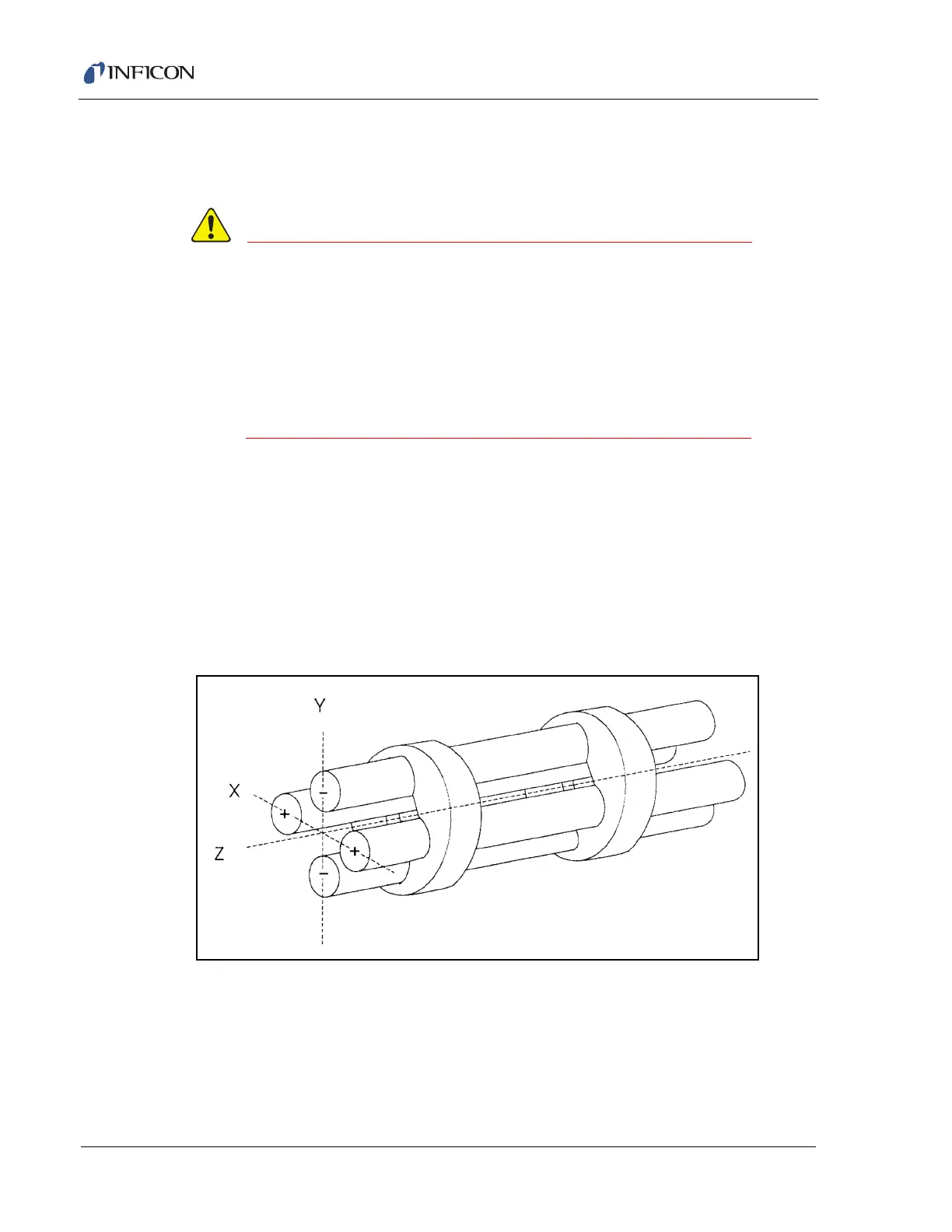3 - 6
Transpector XPR 3+ Operating Manual
can therefore, be used as a measure of the total pressure. When this current
exceeds a preset level, the voltages operating the sensor are turned off, thus
helping to protect the sensor from damage due to an over-pressure condition.
Although this over-pressure protection feature using the
internally measured total pressure is available in
Transpector XPR 3+, it is recommended to use only the
Pirani Interlock for controlling emission to the sensor.
Exposing the Transpector XPR 3+ sensor to
over-pressure or trying to turn the emission on at high
pressures exceeding the Transpector XPR 3+ operating
specifications will cause the filaments to prematurely fail.
3.4.2 The Quadrupole Mass Filter
The ions produced in the ion source are injected into the mass filter, which rejects
all ions except those of a specific mass-to-charge ratio. Most ions contain only
one unit of charge. In Transpector XPR 3+, the mass filter is a quadrupole type,
to which is applied a combination of RF and DC potentials. The RF frequency and
amplitude determine the mass, and the RF/DC ratio determines the filter
selectivity. See Figure 3-2.
Figure 3-2 Sensor’s Quadrupole Mass Filter
The mass filter’s four rods (hence the term “quadrupole”) are alternately charged
to direct ions of specific masses down through the center, deflecting all larger, and
smaller masses (hence the term “mass filter”).
The mass filter consists of four parallel rods, or poles, in a square array. The rods,
and the insulators in which they are mounted, form an extremely precise
mechanical assembly. The distance between the center of the square array and the
